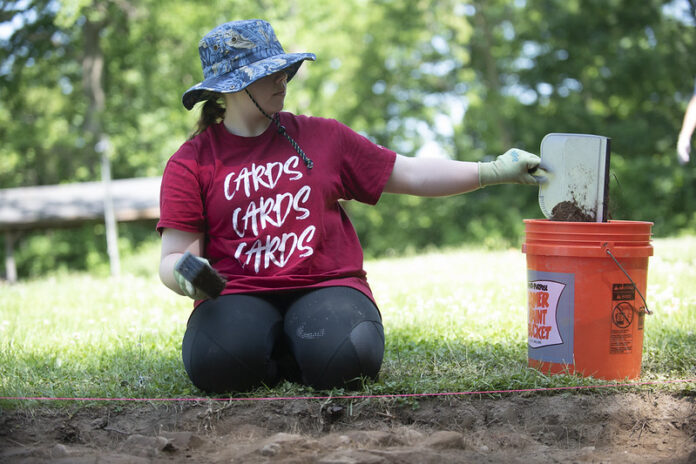
Students and researchers from the University of Louisville are helping with an archaeological dig at a site of the former segregated school on the Louisville campus of the Kentucky School for the Blind (KSB).
KSB, run by the Kentucky Department of Education (KDE), provides educational services for students throughout the state who are blind or visually impaired. Starting in 1884, the school operated a segregated facility on its campus that closed in the 1950s and was demolished.
UofL students from the Department of Anthropology are helping teach younger KSB students archeological field methods such as screening and excavating. A community participation day was held May 21.
In addition to KDE, other partners are the UofL’s Center for Archaeology and Cultural Heritage (CACHe) and the Kentucky School for the Blind Charitable Foundation (KSBCF).
“It has been great seeing these students learn about archeology and be so excited about the process and learn about the history of their campus,” said Ashley Smallwood, UofL associate professor of anthropology and archaeologist who is directing the project as part of her Archaeology Methods course. Assisting her is Tom Jennings, assistant professor of anthropology, archaeologist and director of CACHe. A total of 10 UofL students are taking the course and participating in the project.
KSB Principal Peggy Sinclair-Morris said the school was excited to partner with the KSBCF and UofL for a unique experience.
“In addition, it supports learning about the field of archeology and the importance of preserving and talking about history,” she said.
Kentucky Commissioner of Education Jason E. Glass said the project also supports the United We Learn state initiative.
“This opportunity really hits upon two of the main themes of United We Learn, which is a new vision for the future of public education in the Commonwealth that was created by Kentuckians,” he said. “The central pillar of United We Learn is creating a vibrant experience for every student by making it more hands-on and experiential. It also stresses the importance of our schools and their communities working together.”
The dig began May 9 and will end May 27.
































